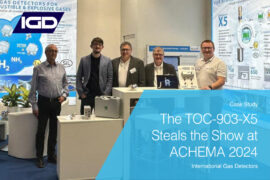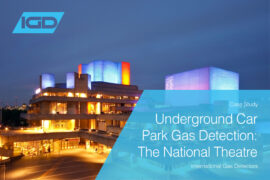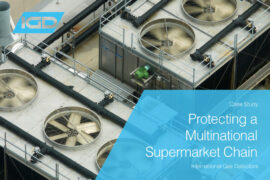Gas safety is an important consideration for any refrigeration application.1 One of our Mechanical & Electrical (M&E) partners, Livewire Mechanical & Electrical, was tasked to provide an ammonia detection system for an industrial refrigeration facility. Detection of ammonia is not always straightforward – but we were able to provide a solution that fits with their existing infrastructure. We provided training on the design, installation, commissioning and ongoing maintenance, so that Livewire could provide a turnkey gas detection solution. Read on to find out more about how we overcame some of the challenges of this project.
Generally, refrigeration requires the use of refrigerant fluid, and many common refrigerants – such as carbon dioxide, propane, and ammonia – are hazardous gases at room temperature. Carbon dioxide and ammonia, for example, are both toxic; and propane is highly flammable.2,3,4 Therefore, in industrial refrigeration applications, reliable gas detectors are essential to safeguard against leaks and ensure the safety of personnel.
IGD was contacted by one of our M&E partners who had been asked to install a gas detection system at a food refrigeration facility belonging to one of their clients, an international transportation company. The refrigeration facility, based in Liverpool, consists of several huge warehouse-sized freezers and chillers, used for the storage of food before transportation.
Current Legislation
Usually, industrial refrigeration facilities will follow the guidelines laid out in EN 3785 and UK COSHH Regulations. However, in this case, the transport company was concerned about occupational exposure, following reports of the smell of gas onsite. To ensure that employee safety concerns were addressed (and COSHH safe exposure regulations such as EH40 were met), the client decided to install gas detectors in areas where personnel worked.6
The refrigerant gas used onsite was ammonia (NH3): a colourless gas with a pungent smell. Ammonia is commonly used as a refrigerant for several reasons, including excellent heat-absorption properties and compatibility with smaller-diameter pipes.7 However, it is an irritant and can cause serious health problems in either high concentrations or over long exposure periods. Though the use of ammonia in industrial refrigeration facilities is not covered by specific rules in the UK (rather, it’s covered by various Health and Safety at Work regulations), concerns over employee wellbeing meant that the client wished to install a robust detection system to ensure that ammonia levels remained within safe limits.4
The Challenges of Low-Temperature Ammonia Detection
Detecting ammonia at low temperatures presents some unique challenges. Existing electrochemical gas detectors can be degraded or “consumed” by ammonia.8, Over long time, even background levels of ammonia can degrade the sensors which can lead to a loss of sensitivity. This is potentially catastrophic if a degraded sensor allows a major ammonia leak to go undetected. Often, optical sensors are preferred for ammonia detection as they don’t suffer the same degradation. However, in this case, there are also application problems to consider: specifically, low temperatures. Many electrochemical sensors are only rated to -20 C. In addition, optical sensors suffer at these temperatures too, due to icing and condensation issues.
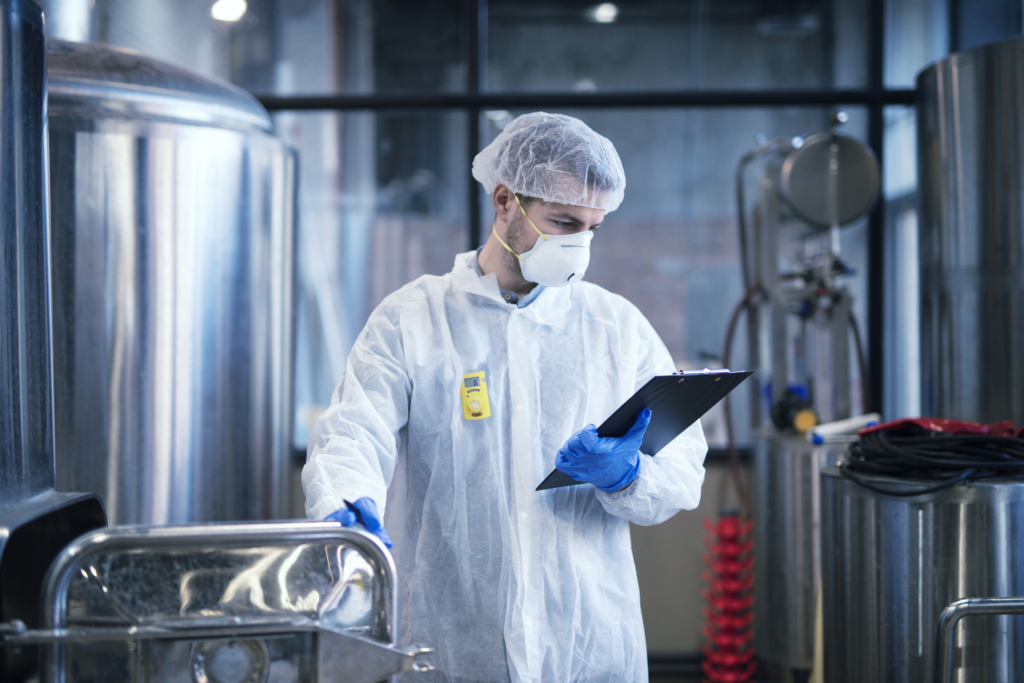
At IGD we came up with our solution to the problem of measuring ammonia at low temperatures, developing and releasing our line of long-life ammonia sensors based on ionic technology. This technology is not consumptive, allowing the sensors to operate effectively without degradation over long periods even where ammonia is present continuously. The technology doesn’t use water in its electrolyte, enabling accurate operation down to -40 C. In this case, IGD was able to offer a technological advantage over the competition.
Our Ammonia detection Solution
In refrigeration applications, it’s generally preferable to install ammonia detection around the valve stations, as gas commonly leaks and accumulates in this area. However, in this facility the valve stations were (cleverly!) positioned outside. Instead, we recommended that gas detectors were installed by the entrances and exits to the freezers and chillers – this way, levels of accumulating ammonia could be monitored in the areas where people were most frequently working.
Our M&E partners installed gas sensors using our advanced addressable 750 series detectors. This gives a major advantage over standard addressable systems or 4-20mA systems, in that it requires far less wiring. In this case, being able to use a 2-Wire addressable configuration enabled savings of up to 70% on installation alone.
Ongoing Monitoring
One of the main challenges with this application was meeting the client’s requirement to remotely monitor the gas detection system. Our M&E partner who installed the gas detection system already uses the Resource Data Management (RDM for short) platform to monitor key systems at the facility. IGD has previously created a Data Management add-on to enable remote monitoring. Our software division worked hard to bring the Data Management add-on up the standards of our advanced 2-Wire addressable technology. This allowed gas levels to be monitored using the RDM system already in place. RDM solutions are now available for all other gas detection applications, allowing remote monitoring of gas levels.
The client now has a robust, accurate, and long-lasting ammonia detection system, that fits in seamlessly with their existing remote process monitoring.
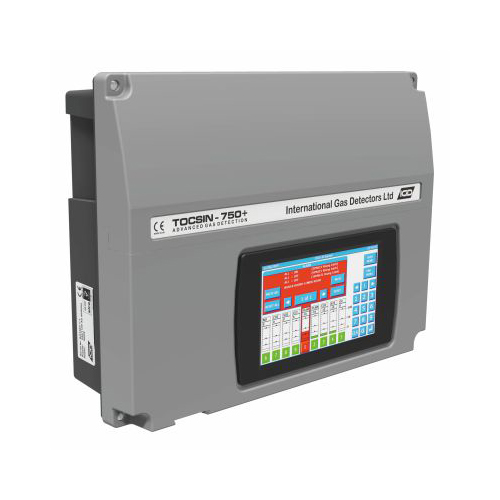
Training and Support for M&Es
As experts in the field of gas detection, we were able to provide complete training for our M&E partner on every element; from design, implementation, and maintenance of our ammonia detection systems.
To find out more about our industry-leading gas detection solutions or the training services we can provide to your company, get in touch with International Gas Detectors today.
References and Further Reading
- Gas Detection For Refrigeration and Air Conditioning – Applications- International Gas Detectors : International Gas Detectors. Available at: https://www.internationalgasdetectors.com/applications/gas-detection-for-refrigeration/. (Accessed: 21st July 2020)
- WHO Air quality guidelines for particulate matter, ozone, nitrogen dioxide and sulfur dioxide. (2006).
- Maclaine-Cross, I. L. & Leonardi, E. Performance and Safety of LPG Refrigerants.
- Pearson, A. Refrigeration with ammonia. International Journal of Refrigeration 31, 545–551 (2008).
- Introduction to Refrigeration Standard EN 378.
- EH40/2005 Workplace exposure limits. (2020).
- Ammonia As a Refrigerant: Pros and Cons | Just Venting. Available at: https://www.goodway.com/hvac-blog/2009/08/ammonia-as-a-refrigerant-pros-and-cons/. (Accessed: 21st July 2020)
- Ly, T. N. & Park, S. Highly sensitive ammonia sensor for diagnostic purpose using reduced graphene oxide and conductive polymer. Sci. Rep. 8, (2018).


